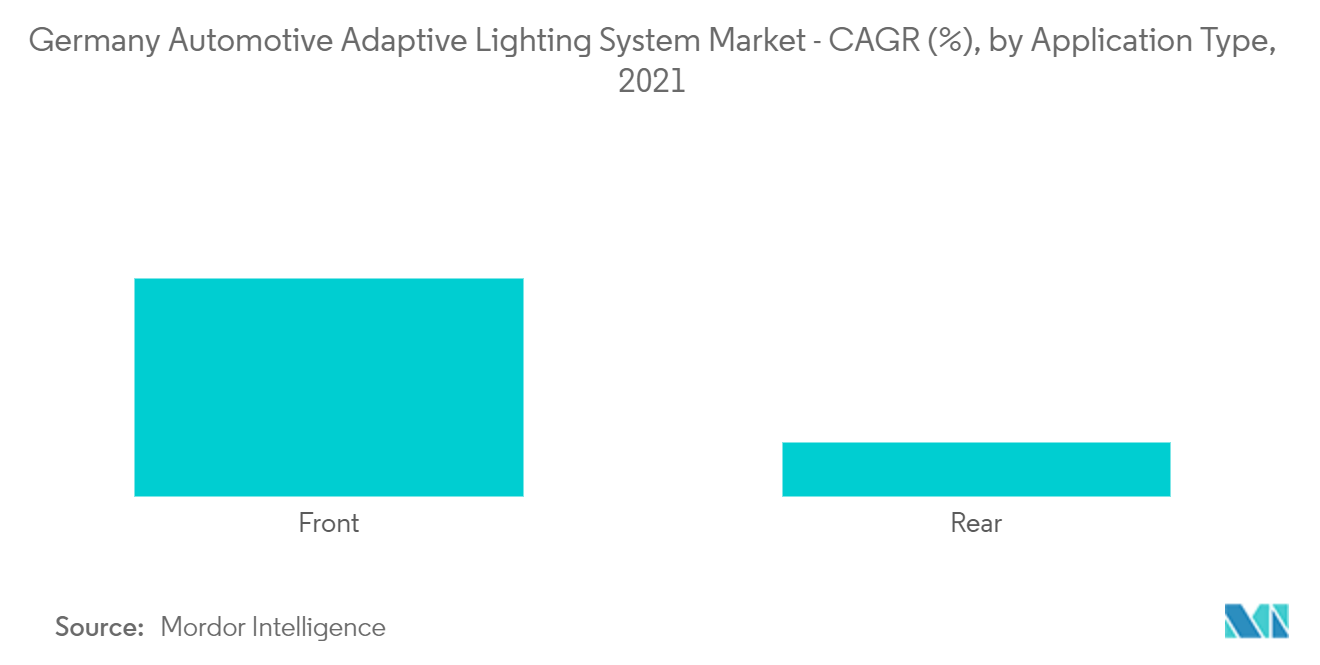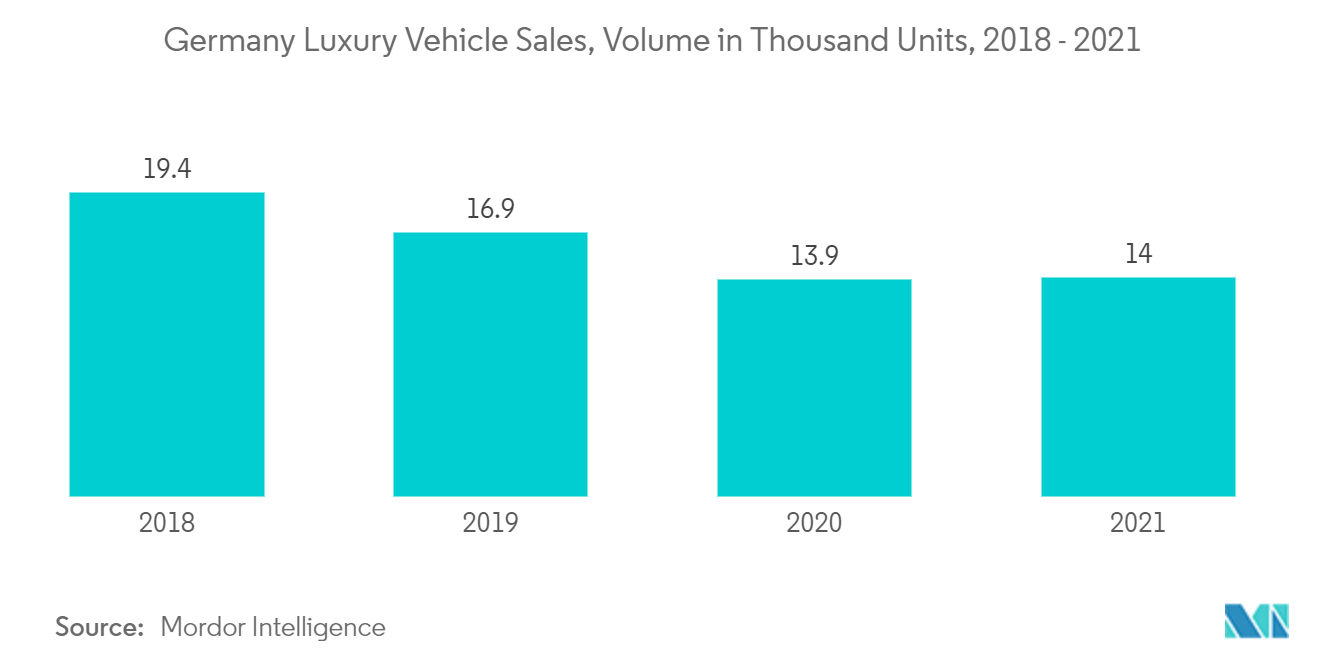Market Trends of Germany Automotive Adaptive Lighting System Industry
This section covers the major market trends shaping the Germany Automotive Adaptive Lighting System Market according to our research experts:
Front Lightening will Lead the Market
- The ALS optimizes light distribution from the headlights according to the driving and road circumstances. There is no need for manual operation to switch on/off the headlight or rear light. Depending on vehicle speed and steering input, the system projects the low-beam headlights in the direction the driver intends to travel. Thereby, it saves time and effort for the driver helping him to concentrate on driving. The system provides an optimized vision to the driver during the night and other poor-sight conditions of the road by adapting the headlight angle and the intensity of the light.
- Improvement of nighttime visibility is a critical issue due to the frequency of fatal accidents during that time. Adaptive LED and laser headlights are some of the major advancements in automotive lighting. Adaptive or matrix LED systems use a grid of individual LEDs that automatically turns on and off based on where the car is headed and the presence of oncoming vehicles detected on the road.
- The basic added advantage is the use of laser headlights which provides a focused, long-range beam that can double the reach of the standard automotive high beams. Some of these systems provide an added advantage by using selective lighting to highlight the different objects on the road, which can be traffic signs and road markings, warning or hazard signs, or objects that are hardly or not at all viewed by the driver, such as deer or dimly lit pedestrians.
- The increasing demand for LED lighting solutions has become a prominent market trend since an LED light consumes 50% less energy to create the same amount of light as compact fluorescent lamps (CFLs) and cold cathode fluorescent lamps (CCFLs). The reduced electricity use can directly reduce yearly CO2 emissions by around 700 million metric tons. Halogen technology is also expected to pick up in the coming years, given this technology is cheap and easy to get, and it also makes the interior of the car look better. Furthermore, owing to their standard design, halogen lamps are simpler to use and install, and they also have a distinct feature, namely the "plug-and-play" function. For instance, the ambient lights on car interiors are probably atmosphere lights, Sound Mood lighting, HMI products ambient atmosphere lights, linear decorative atmosphere lights, color-changing RGB atmosphere lights, etc.
- For example, in March 2021, Hyundai Motor revealed Hyundai BAYON, an all-new crossover SUV explicitly designed for Europe. As a B-segment SUV, BAYON will be the latest and smallest member of Hyundai's expanding SUV family. On the inside, the Bayon gets LED ambient lighting technology integrated into the front passenger foot areas, door wells, front door pull handle areas, and the storage area below the center console.
- Considering these factors and developments, demand for the adaptive lighting system is anticipated to increase over the forecast period.

Luxury Cars will Drive the Market
- The German automotive sector has been the backbone of the European automotive industry for the last decades. Germany has evolved into one of the largest countries in producing and innovating high-tech automotive products. In addition, a net of +60% growth has been observed in Europe's automotive sector for R&D on the back of Germany. This showcases the strong innovation hub's pivotal role in the demand for luxury vehicle sales.
- Previously these technologies were a feature of luxury and high-end cars. Still, now significant manufacturers are implementing the advanced driver-assistance system (ADAS) and connected vehicle technology in low-priced cars. A consistent increase in the demand for compact and mid-sized automobiles equipped with advanced safety features will propel the growth of the German adaptive lighting market.
- Key automakers are following constructive alliances to robust the luxury vehicle sales in the country. For instance:
- In June 2022, Audi was expanding its urban fast charging hubs in Europe for luxury EV segments. The company opened the first semi-permanent site charging site, which features about six 320 kW fast chargers and a lounge in Nuremberg, Germany. In May 2022, Electric car maker Lucid group announced its plan to launch a luxury sedan in Europe at the end of this year. The company launched Lucid Air Dream Edition P and R sedans for limited numbers for consumers in Germany, Switzerland, Netherlands, and Norway in late 2022.
- Considering these factors and developments, demand for the adaptive lighting system is anticipated to witness a high growth rate owing to luxury vehicle sales in Germany.

